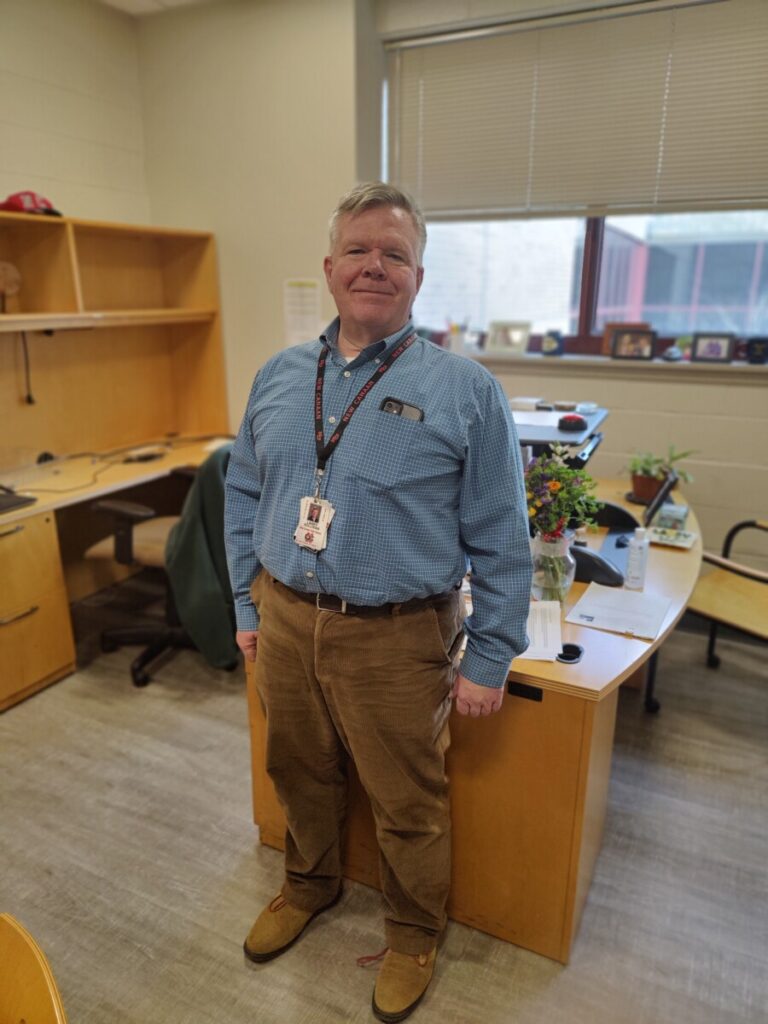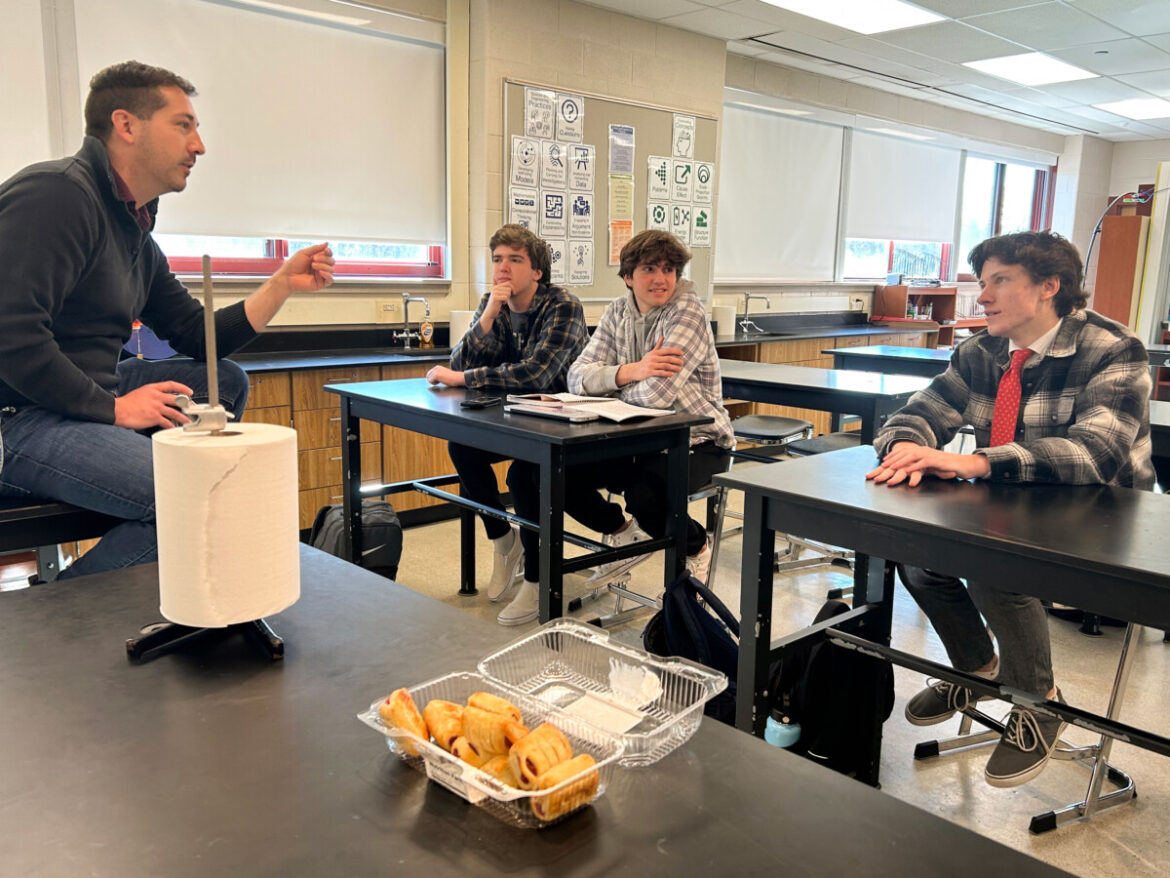Luke Huang, Reporter
@lukehcourant
As I walk into my Connections Class on a Friday, I can feel the subtle sense of nonchalance and fatigue permeating through the air — most of the students around me seem ready to coast through the last few hours of the week before the weekend begins.
Initially, everything seems to be going smoothly. We listen intently to the presentation and dutifully follow the activity’s instructions. However, when it is time for discussions, a palpable sense of unease sets in. The conversations feel stilted and strained, punctuated by long, awkward silences and tepid contributions. It is as though we are all holding back, unwilling to fully engage with the program. Despite our best intentions, we are simply not embracing the transformative potential that Connections has to offer.
According to Assistant Principal Larry Sullivan, the Connections program began 10 years ago, after the New England Association of Secondary Schools and Colleges, an accrediting group, stated that the school should start an advisory program. “Essentially, it was an opportunity for kids to work with an adult in the building, who’s not evaluating them in any way, who’s not grading them, and who’s not teaching them in a subject area,” said Mr. Sullivan.

Since then, Connections has been run by a committee that has adapted the program based on data from the school climate survey. “As an example, when we give the school survey during the spring and kids are reporting to us that there are stressful things in their lives, we try to respond to that,” said Mr. Sullivan.
Through its ability to resolve existing issues and offer even greater benefits, Connections possesses the potential to transcend its current limitations. Despite the sincere efforts made to adapt the curriculum based on student feedback, it is evident that some students still struggle to fully engage with the program.
Throughout her high school journey, senior Ella Milhailoff has had guidance from her older brother, who helped her feel like she knew what was doing and gave her direction. “He was kind of my mentor when it came to the clubs that I joined, upperclassmen advice about what classes to take or extracurriculars to do, and how to handle certain situations,” said Ella. “That was really valuable throughout high school because I was being guided and I kind of knew what I was doing.”
That was one of the reasons why Ella signed up for the Peer Mentor Program, which pairs groups of incoming students with upperclassmen advisors who meet with them during their Connections time. As a peer mentor, she hopes that Connections would help the younger students who would benefit from a similar type of guidance as what she had.
However, the lack of participation from her assigned freshmen group has made it difficult for her to connect with them and develop meaningful relationships. “The teacher who leads it and I have been trying to push them a little more and ask them questions but I feel like they’re either just uninterested or tired,” said Ella. “They’re not sharing as much as we would like them to, but I’m hoping in the future they’ll feel comfortable to reach out to me if they have a question about school. I want to feel like it’s okay to answer.”
The challenge of engagement is a recurring issue that hinders the effectiveness of the Connections program, and it is one that needs to be addressed to help students like Ella provide valuable guidance to their peers.
There are a few reasons why students might not be fully engaged during Connections class. For one, some students might not feel comfortable sharing personal thoughts and feelings with the class. “I feel sometimes it’s too invasive of privacy,” said Ella. “I remember last year, one of the activities was to fill in the paper with things we wanted to work on. No one really wanted to share.”
Another reason is that some students simply don’t find the activities interesting. Junior Adrian McMahon feels that there is a lack of pertinence to the information learned, stating that during one activity, “it felt like it was rambling on about information that we could have individually looked at ourselves.” He also feels that the class takes up valuable time that could be better spent on other schoolwork.
According to Mr. Sullivan, the committee is actively trying to incorporate fun into their activities, but that they often fall into the trap of forced fun. “The adults say here, this is fun, go do this. In the end, the students are sitting there, saying ‘This isn’t fun. How was this fun?’ ” said Mr. Sullivan.
More importantly, the committee sees ensuring that students feel socially and emotionally safe as a priority, such as when students share personal thoughts during Connections. “In the school climate survey, one of our lower scores was that kids didn’t always feel psychologically safe,” said Mr. Sullivan.
To begin with, I’ve noticed that a lack of personal connection between students is what hinders the process of creating a socially safe environment during Connections. As I interviewed students about their experiences, some recounted truly memorable ones thanks to existing connections they have with their peers.
As one anonymous student shared, “Sometimes when I’m not having the best day, I really look forward to going to Connections and talking to my friends and taking a break from school.” For these students, the class provides a rare chance to spend quality time with friends amidst busy schedules and limited time outside of school.
Ella has also had memorable Connections experiences, particularly when the level of personal connection between classmates elevated the discussions. “It was in my science research class, where we had Mrs. Zych as the leader of that session,” said Ella. “It was a really small class with only six or seven students. I can’t remember the activity exactly, but I just remember that because we were in such a small group, we all felt really comfortable talking to each other. We just had a really nice conversation.”
I believe these stories constitute only a glimpse of the meaningful interactions that Connections could facilitate if crucial improvements are made to the program. If we can shift the focus of Connections towards more on building personal connections, it could also have the added benefit of reducing student stress. As Matthew Lieberman, social psychologist and neuroscientist, explains in his book Social: Why Our Brains are Wired to Connect, cultivating good relationships can lower levels of cortisol, a stress hormone.
But how do we go about making this shift? One possibility might be to incorporate games that can be a fun and low-stress way to get to know each other. Indeed, Mr. Sullivan said that he’s all for it, but that the committee is trying to strike a balance between fun and getting things done. Smaller groups might also be helpful, with Ella agreeing that they would allow her to develop stronger relationships with each student.
As I reflect on my own experiences with Connections and the insights shared by my classmates, it becomes clear to me that this class has the potential to be a valuable part of our school experience. By doing so, we can create a stronger and more connected community, one that is better equipped to navigate the challenges of high school and beyond.
I believe the purpose of Connections is to facilitate interaction and self-awareness among us. It’s not really a place meant for us to unburden our souls. Rather, it’s an opportunity to build meaningful relationships, share our thoughts and feelings, and gain valuable insights and skills. It’s a chance to take a break from the rigors of academics. It’s a time to simply be present with each other.




